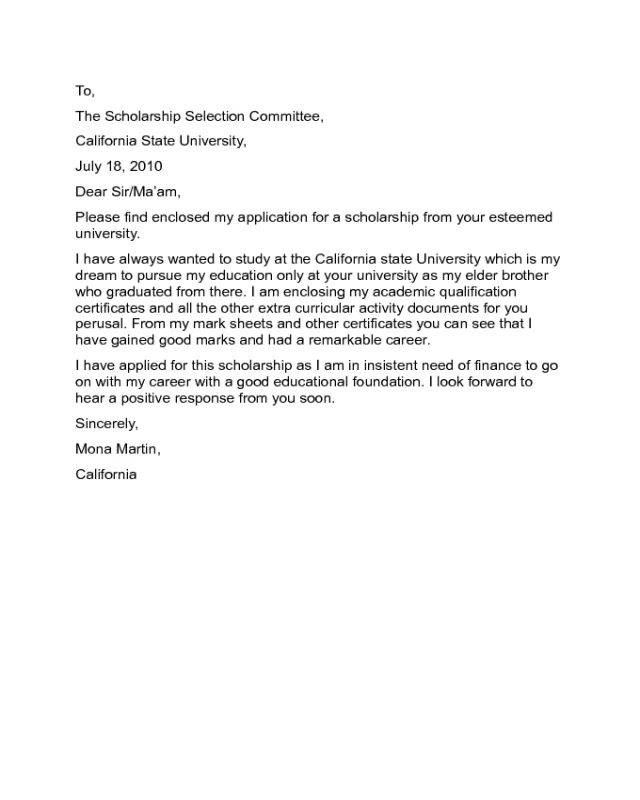Understanding the Scholarship Cover Letter
A scholarship cover letter is more than just a formality; it’s your chance to make a strong first impression. It’s your personal introduction to the scholarship committee, a document where you can showcase your personality, achievements, and aspirations. Unlike a resume or application form, the cover letter allows you to tell your story and connect with the reviewers on a deeper level. It’s where you humanize your application and demonstrate why you are the ideal candidate for the scholarship. A well-crafted cover letter can significantly increase your chances of being selected, even if your academic record isn’t perfect. Therefore, take the time to meticulously craft a cover letter that sets you apart from other applicants.
Why Is a Cover Letter Necessary for Scholarships?
Scholarship committees receive numerous applications, and a cover letter serves as your unique identifier. It provides context to your application, helping the committee understand who you are beyond your grades and test scores. It allows you to explain any circumstances that might have affected your academic performance, such as health issues or family responsibilities. Moreover, a cover letter demonstrates your communication skills and your genuine interest in the scholarship. By explaining why you need the scholarship and how it will help you achieve your goals, you create a compelling narrative that resonates with the reviewers. Without a cover letter, your application may seem incomplete, and you risk missing the opportunity to fully represent yourself.
Key Components of a Successful Cover Letter
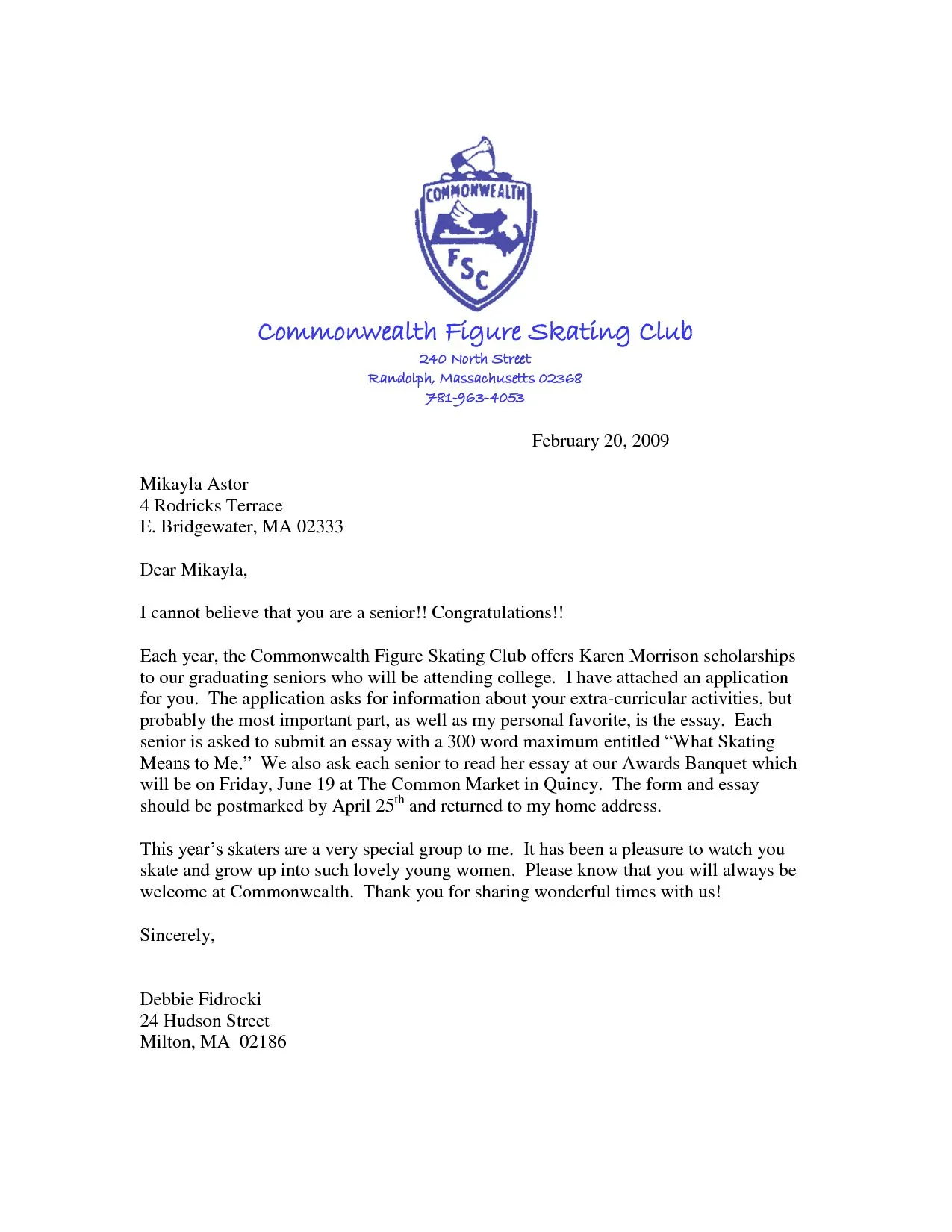
A compelling scholarship cover letter is comprised of several essential elements that work together to create a persuasive narrative. Each section should be carefully considered and tailored to the specific scholarship and your personal story. A strong opening, compelling body paragraphs, and a concise conclusion are all necessary. Including the specific elements mentioned below, and organizing them in a way that flows naturally, can significantly boost your chances of success.
Your Personal Introduction
Start with a strong opening that grabs the reader’s attention. Briefly introduce yourself and state the purpose of your letter — to apply for the scholarship. Mention where you learned about the scholarship and, if applicable, who recommended you. Clearly stating the scholarship name is also crucial. This immediately establishes the context and demonstrates your organization. Keep the introduction concise and engaging, setting the tone for the rest of your letter. Make sure to include a hook that draws the reader in.
Highlighting Your Achievements
This section is your opportunity to showcase your accomplishments. Focus on achievements relevant to the scholarship and your future goals. Use specific examples to demonstrate your skills, qualities, and the impact you’ve made. Be sure to mention all your accomplishments. This is a prime opportunity to set yourself apart from the competition. Focus on the most relevant achievements, and be specific, for example, when discussing academic accomplishments, provide data and numbers.
Academic Excellence
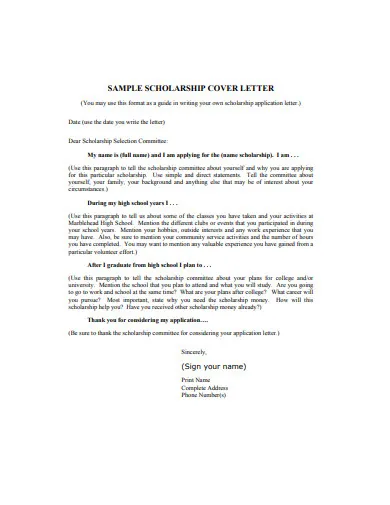
Detail your academic achievements, such as your GPA, honors, and any specific courses or projects where you excelled. Mention any academic awards, scholarships, or recognition you’ve received. If your GPA isn’t perfect, briefly explain any extenuating circumstances without making excuses. Emphasize your dedication to learning and your commitment to academic excellence. Provide quantifiable data when you can, such as your class ranking or specific grades.
Extracurricular Activities and Leadership
Describe your involvement in extracurricular activities, such as clubs, sports, volunteer work, or other community involvement. Highlight any leadership positions you’ve held and the responsibilities you undertook. Focus on how these activities have shaped you and what you’ve learned from them. Demonstrate your ability to work in teams, take initiative, and make a positive impact. Showcasing leadership roles and how you’ve improved the groups can be very beneficial.
Showcasing Your Financial Need
If the scholarship is need-based, clearly and honestly explain your financial situation. Briefly describe your family’s income, expenses, and any other financial challenges you face. Explain why you need the scholarship to pursue your education and how it will impact your ability to attend school. Be specific and avoid making it sound like you are asking for a handout. Focus on your commitment to your studies and your desire to succeed despite financial obstacles. Be respectful when communicating your needs.
Demonstrating Your Goals and Aspirations
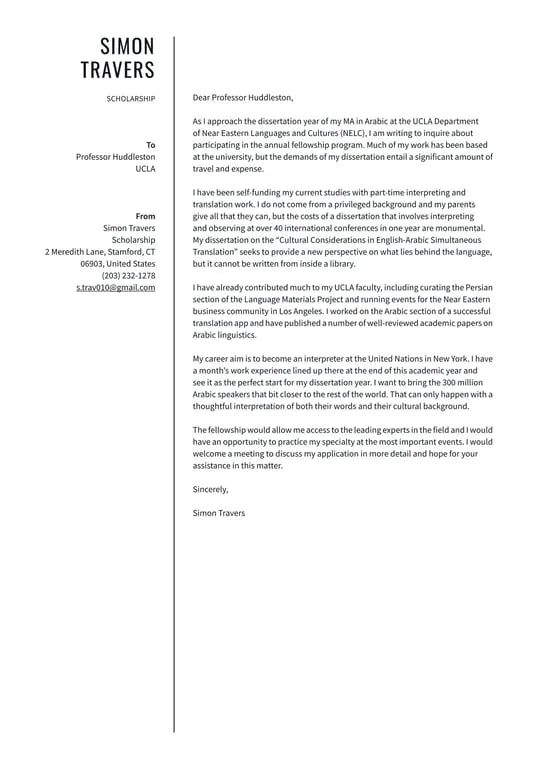
Outline your future academic and career goals, and explain how the scholarship will help you achieve them. Connect your aspirations to the scholarship’s purpose and the values of the organization offering it. Share your vision for the future and how you plan to make a positive impact on your community or field of study. Show the scholarship committee that you have a clear plan and that you are determined to succeed. This will greatly increase your chances of success.
Expressing Your Gratitude
Conclude your letter by expressing your gratitude to the scholarship committee for considering your application. Reiterate your interest in the scholarship and your commitment to making the most of the opportunity. Thank them for their time and consideration, and provide your contact information. It’s a polite way to end your letter and shows respect for their time.
Structuring Your Cover Letter
A well-structured cover letter is easy to read and highlights your key qualifications. Use a formal and professional tone throughout. Maintain a clear and concise writing style, avoiding jargon or overly complex sentences. Organize your letter into distinct paragraphs, each addressing a specific aspect of your application. Use headings and subheadings to guide the reader and make your letter more visually appealing. Ensure your letter flows logically, starting with your introduction and progressing through your achievements, financial need (if applicable), goals, and conclusion.
Formatting and Layout
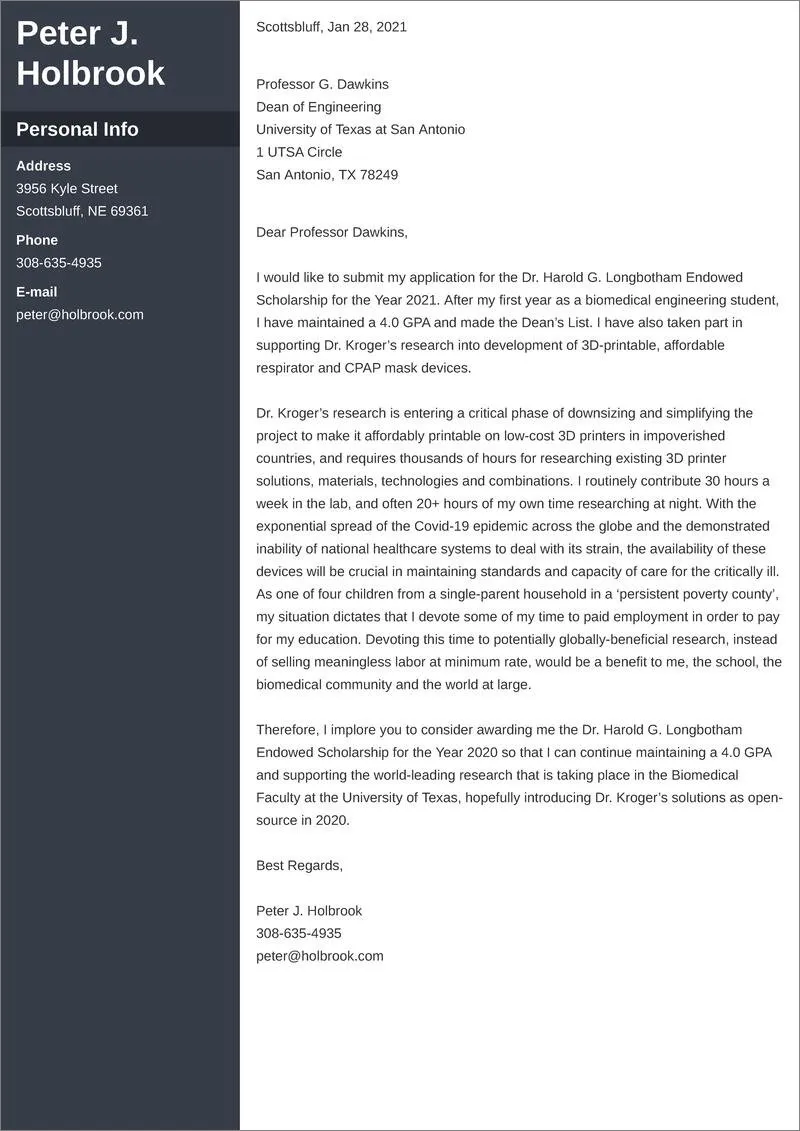
Pay close attention to the formatting of your cover letter. Use a standard font, such as Times New Roman or Arial, in a readable size (11 or 12 points). Maintain consistent margins (1 inch on all sides) and use single-spaced lines with a double space between paragraphs. Include your contact information (name, address, phone number, and email) at the top of the letter, along with the date and the scholarship provider’s contact information (if available). Keep the length to one page, unless specified otherwise in the scholarship guidelines. Proper formatting demonstrates professionalism and respect for the scholarship committee’s time. Use a professional template.
Proofreading and Editing
Proofreading is critical to ensuring your cover letter is free of errors. Carefully review your letter for any typos, grammatical errors, and spelling mistakes. Read your letter aloud to catch any awkward phrasing or unclear sentences. Have a friend, family member, or mentor read your letter for feedback. Pay close attention to the tone and ensure it is appropriate for the scholarship. A polished, error-free letter demonstrates your attention to detail and commitment to excellence. Thorough proofreading is one of the most important steps.
Common Mistakes to Avoid
Several common mistakes can undermine your scholarship application. Avoiding these pitfalls will significantly increase your chances of success. Take your time, pay attention to details, and ensure your application is perfect. Here are the top common mistakes that you should avoid to increase your chances of getting accepted.
Generic Letters
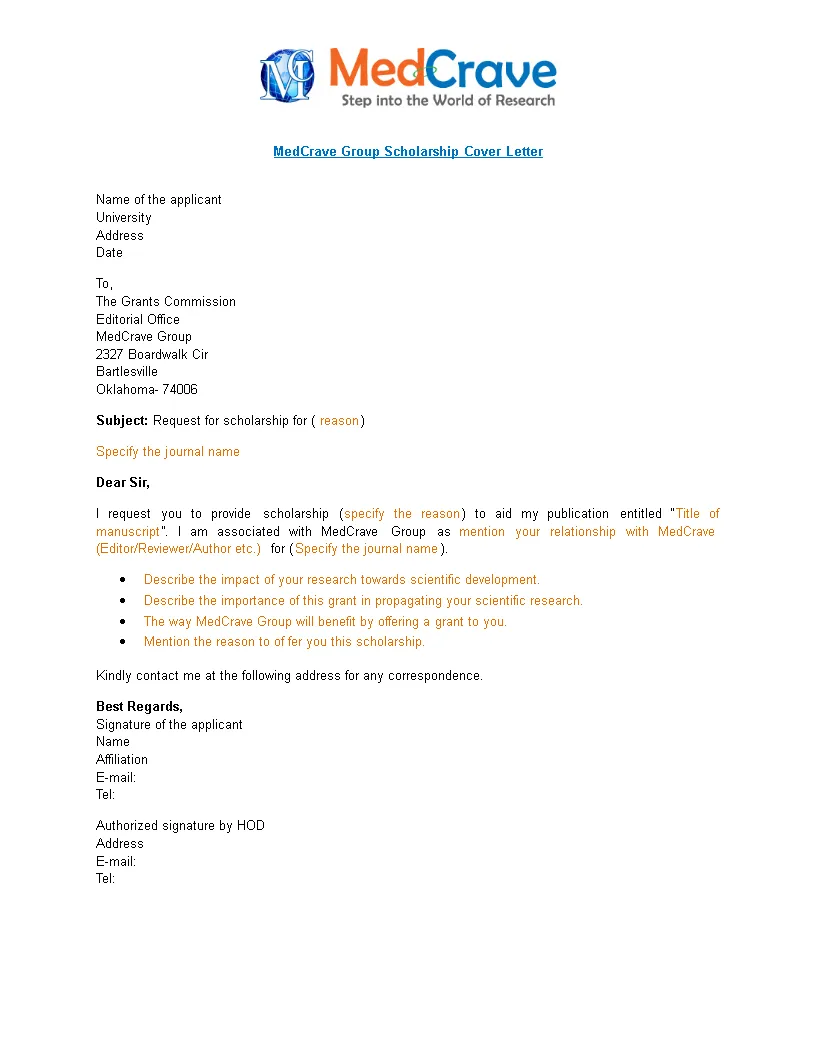
Avoid sending a generic cover letter to multiple scholarships. Tailor each letter to the specific scholarship requirements and the values of the organization offering it. Demonstrate that you have researched the scholarship and understand its goals. Use specific examples that showcase your qualifications and align with the scholarship’s mission. Generic letters lack personalization and fail to demonstrate your genuine interest in the scholarship. Tailor the cover letter to the scholarship that you’re applying to. Be sure to follow all requirements.
Typos and Grammatical Errors
Typos and grammatical errors can detract from the professionalism of your application. Always proofread your letter carefully and use grammar and spell-checking tools. Have someone else review your letter to catch any mistakes you might have missed. Errors can make you look careless or inattentive, and can reflect poorly on your writing skills. Proofreading is absolutely critical.
Ignoring Instructions
Carefully read and follow all the instructions provided by the scholarship provider. Pay attention to the required format, length, and content. Failure to follow instructions can lead to your application being rejected. Ensure you submit all required documents and adhere to all deadlines. Be sure to check the requirements before you apply, because all applications are different. Make sure you meet all the requirements. Not doing so may hurt your chances.
Examples of Effective Cover Letters
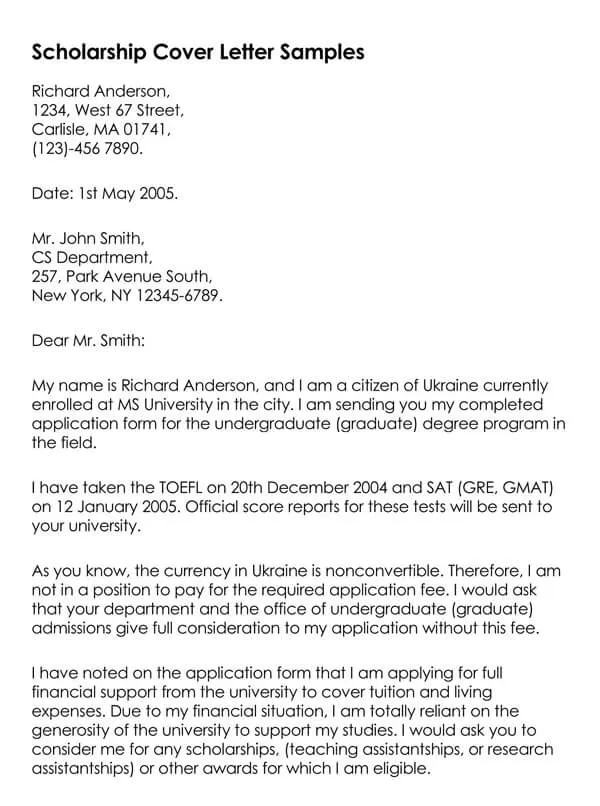
Reviewing examples of successful cover letters can provide valuable insights and inspiration. Study different styles and approaches to understand how others have effectively presented their qualifications. Look for examples that align with your own experiences and the specific requirements of the scholarships you are applying for. Adapt the structure, content, and tone to suit your needs. The following are a few examples that you can refer to.
Example 1: Highlighting Academic Achievements
In this type of cover letter, the applicant showcases their academic achievements, such as their GPA, honors, and specific courses. The letter emphasizes their dedication to learning and commitment to academic excellence. It also provides quantifiable data, such as their class rank and any academic awards, to demonstrate their accomplishments. In addition to the academic achievements, extracurricular activities should also be included. The most important is to show the applicant’s strong academic background.
Example 2: Focusing on Community Involvement
This type of cover letter highlights the applicant’s community involvement and leadership roles. It describes their contributions to their community and demonstrates their ability to work in teams, take initiative, and make a positive impact. It emphasizes the applicant’s commitment to service and their desire to make a difference. The applicant mentions volunteer work, clubs, and other extracurricular activities to further showcase their strengths and achievements in leadership and service. Be sure to explain the impact you’ve had in the community.
Example 3: Addressing Financial Need
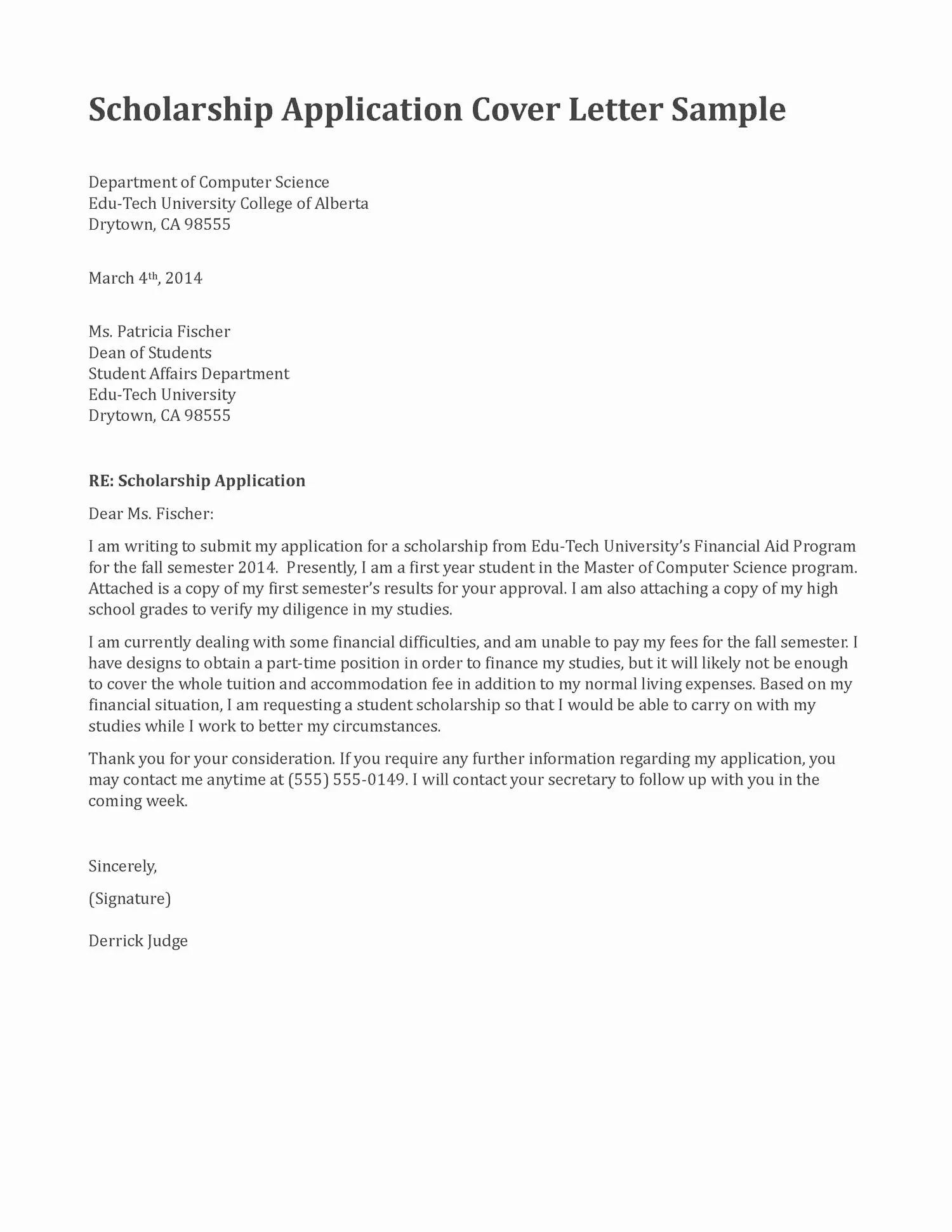
This type of cover letter focuses on the applicant’s financial need and explains why they need the scholarship. The applicant honestly describes their family’s financial situation and the challenges they face. They emphasize their commitment to their studies and their desire to succeed despite financial obstacles. They express their gratitude for the scholarship and explain how it will help them achieve their goals. While describing the financial difficulties, the applicant maintains a positive tone and demonstrates their determination to overcome challenges.
Tips for Customizing Your Cover Letter
Customizing your cover letter for each scholarship is crucial for maximizing your chances of success. Here are some tips to help you tailor your letter effectively. This will help you demonstrate your dedication and genuine interest in each particular scholarship and increase your chances of getting accepted. Be sure to follow the tips.
Researching the Scholarship Provider
Research the scholarship provider to understand their mission, values, and priorities. Identify the specific criteria they are looking for in applicants. Visit their website, read their mission statement, and review any past recipients’ profiles. This information will help you tailor your letter to align with their goals and demonstrate your genuine interest in their scholarship. By understanding the organization’s values, you can highlight how your achievements and goals match their criteria. This research is very beneficial.
Tailoring Your Letter to Each Scholarship
Once you understand the scholarship provider, tailor your letter to their specific requirements. Highlight the aspects of your experiences that are most relevant to the scholarship’s goals. Use the keywords and phrases from the scholarship description and application instructions. Avoid using a generic cover letter. Customize your letter to address each scholarship’s specific criteria. By tailoring your letter, you demonstrate your attention to detail and your genuine interest in the scholarship. It’s important to ensure that all your information matches the scholarship requirements.
Final Thoughts and Next Steps
Writing a successful scholarship cover letter requires careful planning, attention to detail, and a genuine effort to present yourself in the best possible light. By following the guidelines and tips in this guide, you can craft a compelling cover letter that showcases your qualifications and increases your chances of getting accepted. Remember to start early, research the scholarship provider, and customize your letter for each application. Proofread your letter carefully, and seek feedback from others. Good luck with your scholarship applications, and best wishes for your academic success.
